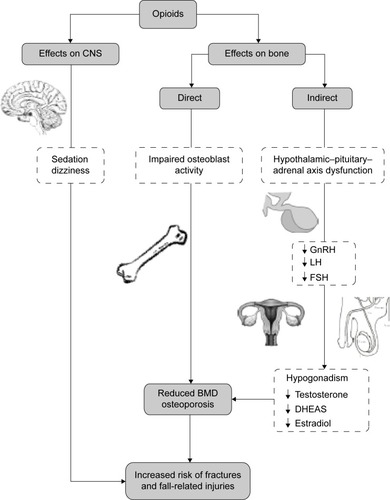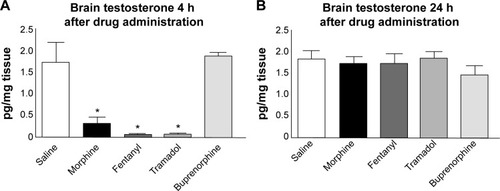Figures & data
Figure 1 Mechanisms by which opioids may increase the risk of fracture and fall-related injuries.
Abbreviations: CNS, central nervous system; GnRH, gonadotropin-releasing hormone; LH, luteinizing hormone; FSH, follicle-stimulating hormone; DHEAS, dehydroepiandrosterone sulfate; BMD, bone mass density.

Figure 2 Opioid-induced effects on brain testosterone.
Notes: *Diencephalic brain testosterone levels following the subcutaneous administration of morphine (10 mg/kg), fentanyl (0.1 mg/kg), tramadol (40 mg/kg), or buprenorphine (0.1 mg/kg). (A) Brain testosterone levels were lower than control in all groups except buprenorphine at 4 hours. (B) No differences were observed between groups in brain testosterone levels at 24 hours. Reprinted from Neuroscience, 140(3), Ceccarelli I, De Padova AM, Fiorenzani P, Massafra C, Aloisi AM; Single opioid administration modifies gonadal steroids in both the CNS and plasma of male rats, 929–937, Copyright (2006), with permission from Elsevier.Citation58
Abbreviation: h, hours.
Abbreviation: h, hours.

